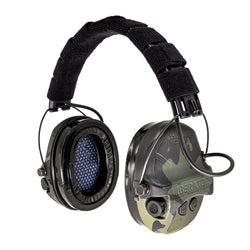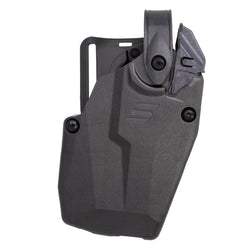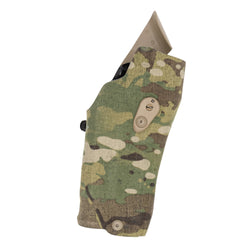Investing in a quality pair of boots is only the beginning of ensuring they deliver peak performance. One of the most overlooked but essential aspects of boot care is breaking them in properly.
From experience, I’ve learned that no matter how top‑tier the construction, a fresh pair will challenge your feet if you skip the break‑in phase. I’ve hiked, worked, and trained in boots that felt like bricks at first, but with patience they became some of the most dependable gear I own.
New boots often feel stiff and unforgiving when worn for long periods without adjustment. Through a structured break‑in process, however, they mold to the wearer’s feet, enhancing comfort and preserving durability. As the materials flex, strain on seams, stitching, and soles is reduced, preventing premature damage. A gradual break‑in allows components to adapt naturally, increasing comfort while reinforcing longevity.
Right Initial Fit is Essential
Beyond breaking them in, getting the right initial fit is critical. A poorly fitted boot not only causes discomfort but can lead to chronic foot problems even after the material softens. No amount of breaking‑in can compensate for a mismatched size. Ensuring the correct fit means considering foot shape, arch support, width, and intended use.
Try boots with the socks you plan to wear, especially if they’re thick or moisture‑wicking, since sock type influences fit. Because feet swell throughout the day, trying boots in the late afternoon provides a more realistic gauge.

Breaking in boots is only effective if they’re the right size and shape. A well‑fitted boot should provide firm support without pressure points. Toes need room to wiggle, and the heel should stay secure. Many buy boots too tight, hoping they’ll stretch significantly, but the amount is limited. An overly snug fit can cause lasting discomfort. For unique foot shapes, such as high arches or wide feet, custom insoles or broader designs may be necessary.
No two feet are alike, something I learned the hard way. I cycled through several brands, enduring cramped toes and aching arches, before finally finding a pair that felt made for me. That trial‑and‑error journey taught me that proper fit goes far beyond size. It’s about syncing boots with your routine, the gear you rely on, and the unique stride of your feet.
Why Break-in is Important
Breaking in boots offers a number of tangible benefits. First off, it improves comfort and allows a personal fit to develop. Rigid materials such as leather, synthetics, and reinforced toe boxes need time to adapt to your foot’s natural shape and movement. Without proper wear-in, users may experience pinching or pressure that makes extended use painful. Gradual wear helps boots conform to your feet, enhancing overall comfort.
Breaking in boots properly helps prevent blisters and foot injuries. Stiff materials rubbing against the skin cause friction, resulting in painful hot spots and blisters. Continued irritation may even lead to calluses. Breaking in boots reduces these risks by softening the material and creating a smoother, more forgiving interior surface.

A proper break-in also protects the boot’s integrity. Without easing the boots into full use, excessive strain may lead to premature cracking, sole separation, or frayed stitching. Controlled wear allows all components to adjust gradually, extending the life of your investment.
Maintaining breathability also plays a key role, Moisture buildup from sweat during break-in can contribute to odors and material degradation. Using breathable linings and moisture-wicking insoles helps preserve both comfort and structure. it’s worth noting that rotating boots between wears and air-drying them thoroughly are also key practices to prevent odor and material degradation.
A well-broken-in boot optimizes performance in different environments. Flexibility improves stride, grip, and responsiveness, which is essential in settings that require agility like hiking uneven terrain or operating in fast-paced environments. Stiffness can slow you down, whereas boots that move with you enhance stability and freedom of movement.

How to Break In Boots
Breaking in boots takes patience and consistency. Start by wearing them indoors for short periods, gradually increasing time as the leather molds to your feet. Thick, moisture‑wicking socks, especially wool, reduce friction and cushion your feet during this stage. Give boots time to rest between wears so the material can adapt without stress. In extreme climates, waterproofing treatments or thermal insoles add comfort and protection.

A boot jack can make a big difference early on, since new boots are often stiff and difficult to remove by hand. Using one prevents unnecessary strain on the heel and stitching while sparing your feet from awkward tugging. Likewise, a boot horn helps when putting boots on, guiding your foot smoothly into place without crushing the heel counter or overstretching the leather.
Together, these tools make the break‑in process far more comfortable, encouraging shorter, more frequent wear sessions, the ideal way to let boots gradually mold to your feet.

For smooth, full‑grain leather, a light application of conditioner such as Bick 4 or Venetian Leather Balm can ease the break‑in by softening fibers and preventing cracks. Moderation is key, though: over‑conditioning risks oversoftening the leather and weakening the stitching. Mink oil may also be used sparingly, but it tends to darken leather noticeably and can soften leather more than desired, so reserve it for cases where darkening is acceptable.
If certain areas feel too tight, boot stretchers can provide targeted relief, especially around the toe box or midfoot, without compromising the boot’s structure. Flexing the soles by hand helps reduce rigidity. Heat should be used with caution. While a hair dryer on a low setting can soften leather slightly, conditioning is generally a safer method. If heat is applied, keep it minimal and even to avoid drying or cracking the leather.
Walking on varied surfaces—grass, carpet, and regular pavement—helps the soles flex naturally and adapt to your stride. Specialty insoles can improve comfort and support during the break‑in phase. For persistent discomfort, professional cobblers offer stretching services tailored to your foot shape.

Throughout the process, resist the urge to rush. Wearing new boots for too long, too soon can lead to blisters and unnecessary foot stress. Avoid shortcuts like soaking boots in water, which can weaken leather and cause improper drying, ultimately reducing their lifespan.
If friction spots appear, blister pads or moleskin can protect your skin and make the break‑in more comfortable. With steady, mindful wear and proper care, your boots will gradually become both comfortable and durable, ready to serve you for years.
Final Thoughts
Breaking in boots is a critical step that boosts comfort, protects your feet, and preserves the integrity of your footwear. But even the best methods won’t fix a poor initial fit. Begin with the right size and shape, then break them in gradually with attention to fit, materials, and wear patterns.
After break-in, regular maintenance such as cleaning, conditioning, and inspecting for wear helps ensure long-lasting performance. Taking the time to break in and care for boots properly means securing a reliable, high-performing pair ready to meet the demands of your lifestyle, wherever they take you.











